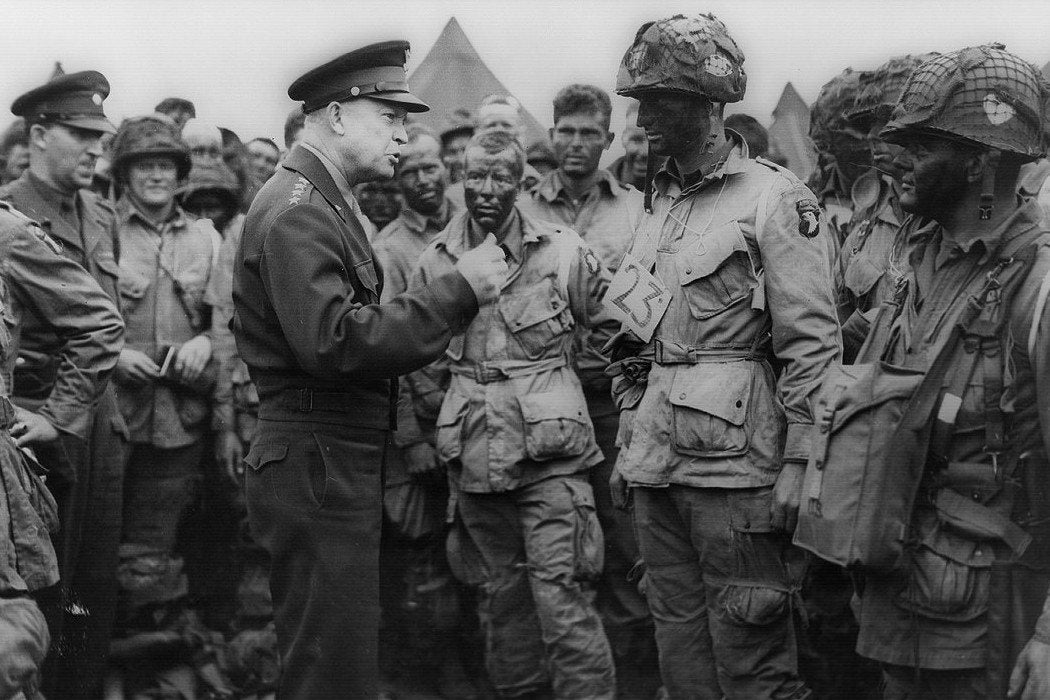How can political and corporate leaders best respond when “mistakes are made“? In one historic example, General Dwight D. Eisenhower was prepared to show leadership by accepting blame without pointing fingers.
Before the D-Day landing on June 6th, 1944, Eisenhower, commander of the invasion force, wrote two letters for public consumption. One was released, praising the efforts of the soldiers and sailors who successfully gained a foothold into Nazi-occupied France. The other was not.
Weekly Digest
It was written in case of disaster and filed away. Eisenhower wrote a curt message that pointed to himself as the blame for any defeat. “My decision to attack at this time and place was based upon the best information available. The troops, the air and the Navy did all that bravery and devotion to duty could do. If any blame or fault attaches to the attempt it is mine alone,” said the letter, to be released only in the case of a disaster that didn’t happen.
Finger-Pointing In Times of Trouble
But not all leaders are so willing to accept responsibility. Finger-pointing leadership is an issue for peacetime as well. Mohammed A. El-Erian notes that the massive economic downturn of 2008 created a finger-pointing storm. Bankers pointed at lax regulators; regulators pointed at politicians willing to look the other away if prosperity could be maintained for the moment, even if disaster loomed. The blame game generated an international malaise, making it difficult to build shared responsibility for an international economy. The result, notes El-Erian, was a universal look inwards, as protectionism became a popular response to fear.
What Finger-Pointing Really Means
Political consultant Steve Adubato says that finger-pointing is a sign of leadership failure. He recounts the story of a West Point commander who took responsibility for a presentation with anti-gay overtones by a subordinate. U.S. Army Lieutenant Colonel Hank Keirsey, while innocent of wrongdoing, was cited for allowing a poisonous atmosphere to exist in his command. Despite a sterling 24-year record of military leadership, Keirsey was drummed out of the Army.
How Eisenhower Avoided Finger-Pointing
Before the war, as a peacetime officer, few would have picked Eisenhower as destined for greatness. He was largely known as a bureaucrat. He had no experience in command of large armies, with domestic training assignments causing him to miss World War I action. Foreign diplomacy was an entirely new experience. Yet, when given command of the immense Allied forces, he successfully navigated prickly personalities, such as Field Marshall Bernard Montgomery, his British counterpart known for glory seeking; his American subordinates, including General George S. Patton, and even allies such as Winston Churchill, who Ike had to dissuade from personally taking part in the invasion with British troops.
According to historian Stephen Ambrose, Eisenhower evolved as a leader, ready to listen to intelligence reports, asking questions, finding answers. The D-Day invasion involved throwing 10 Allied divisions at 55 German divisions; the need was to convince the Germans that the invasion would be in Calais, where they eventually massed their troops. The Normandy location proved to be a successful feint.
Still many aspects of the invasion could have gone wrong. Some did. In any case, Eisenhower was willing to accept responsibility for failure and graciously spread the credit for success, a contrast from leadership that seeks glory in victory and passes blame at times of defeat.







